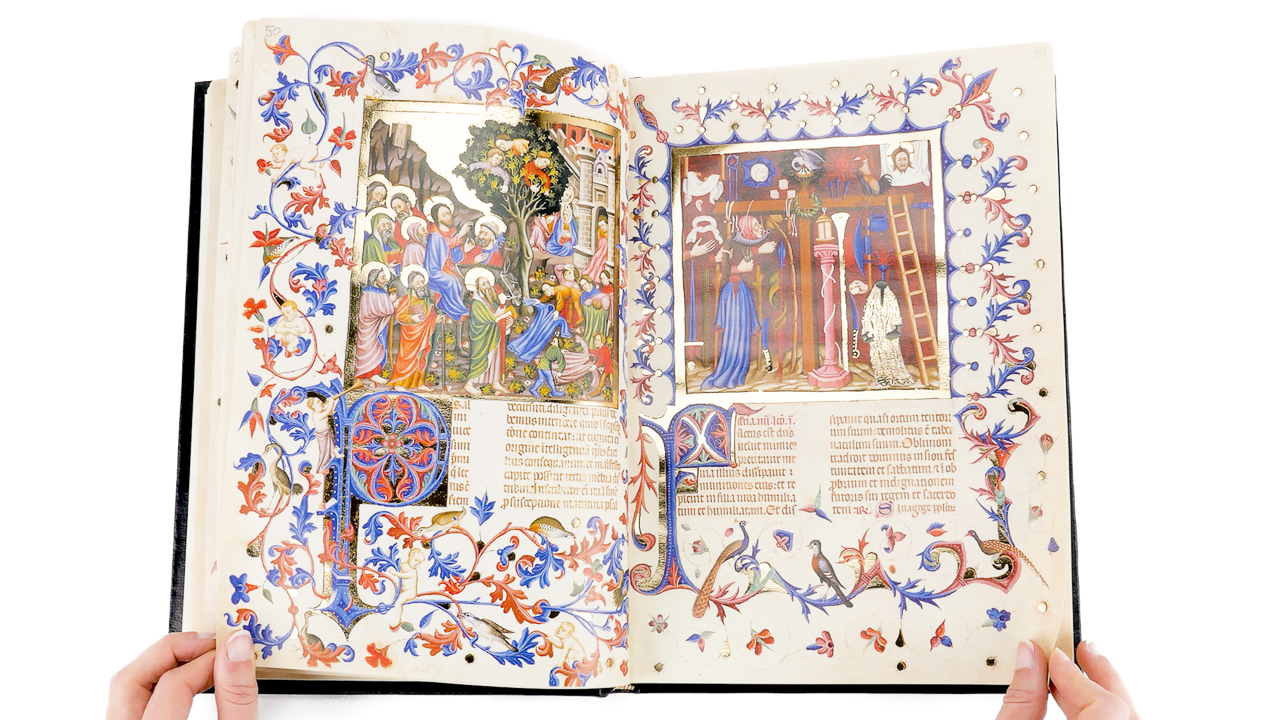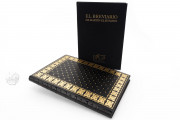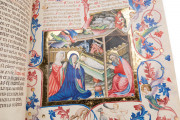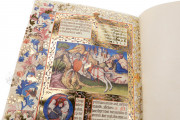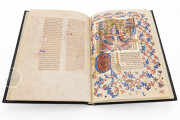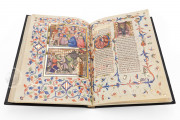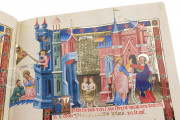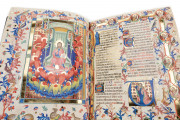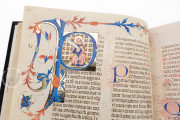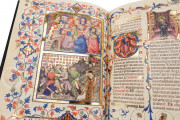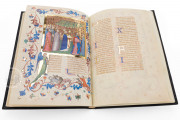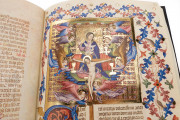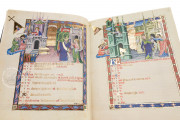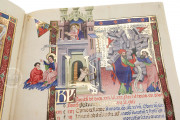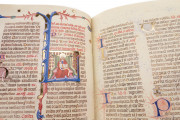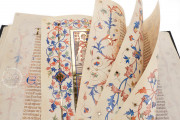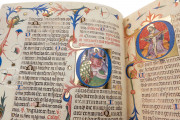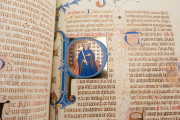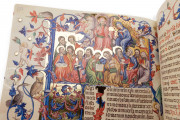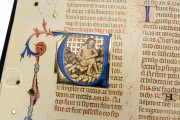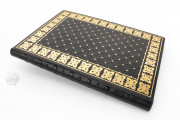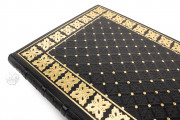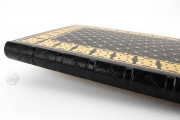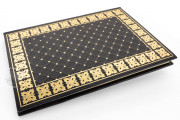The Breviary of Martin of Aragon is a lavishly illuminated manuscript of Christian prayer services made for Martin I, "the humane," King of Aragon. Created at the royal Cistercian monastery of Santa María de Poblet around 1400, with some illumination executed some years later, it is the most ambitious manuscript illuminated in the International Style in the Crown of Aragon. Its dazzling illumination includes twelve calendar miniatures, five full-page miniatures, twelve half-page miniatures, and sixty-eight historiated initials.
King Martin's breviary begins with a calendar and the biblical book of Psalms (with prayers, canticles, and a litany). Most of the book is taken up with daily prayer services arranged in two annual cycles, one of the holidays commemorating events in the life of Christ and Sundays and another of saints' commemorations. After services for different categories of saints comes an Office of Saint George.
The International Style in Iberia
At least four illuminators contributed to the illumination of the breviary. All painted in the International Style of around 1400 characterized by elegant figures and attention to naturalistic detail. Blending contemporary artistic impulses from Italy and northern Europe, the style was favored in courtly circles across Europe.
The illuminators of the breviary brought local characteristics to their painting. The art of the master responsible for most of the large miniatures shows strong affinities with contemporary Valencian painting, while the work of the artist of the calendar miniatures, the illumination of the psalter, and the historiated initials for saints' feasts reveals his training in Catalonia.
Extraordinary Calendar Miniatures
A half-page miniature heads each month of the calendar. As a suite of twelve, the miniatures emphasize the triumph of the Church. Although each painting includes the conventional zodiac sign, the subject matter is otherwise remarkable, although not entirely unprecedented, for calendar pages.
In each calendar miniature, a tower at left represents the Church: at the top, a female figure displays a banner, and outside the Church is a scene from the life of Saint Paul—his conversion for January and his preaching to a congregation or a person (representing the epistles) for the remaining months. At the right is pictured a crumbling Synagogue behind an Old Testament figure, usually a prophet, and one of Christ's apostles.
A Celebration of the House of Barcelona
Martin was the last king of Aragon of the House of Barcelona, and his breviary includes his arms on many pages. The calendar features long notices in blue ink of the deaths of his eight predecessors, from Peter II (1164-1213), "the Catholic," to Martin's brother, John I (1350-1396), who died on Christmas day after a fall from a horse.
Among the saints celebrated with a full Office is Saint Eulalia, patron saint of Barcelona, who was said to have been crucified on an X-shaped cross at the age of thirteen, a torture vividly depicted in the manuscript (fol. 317r).
A Reflection of Royal Piety
Martin and his wife, María de Luna, were followers of the devotio moderna ("modern devotion"), which emphasizes intense personal religious experience. The elegantly attired contemporary woman shown in the miniature of the Nativity may represent María, joining the Virgin Mary, Saint Joseph, and the angels in adoring the Christ child (fol. 134r).
Enhanced for Alfonso V
The illumination of the breviary was executed in two phases. Most was finished before Martin's death in 1410, but the page that opens the Office of Saint George (fol. 444v)—as well as additions to earlier pages—has been attributed to Leonardo Crespi, an illuminator known to have been in the employ of Alfonso V (1396-1458), "the magnanimous," King of Aragon, in the early fifteenth century.
A Gem from the Collection of the Rothschild Family
The breviary was acquired by Carl Mayer von Rothschild (1788-1855) in Naples. It passed then to his granddaughter, Thérèse von Rothschild (1847-1931). Her son, Henri de Rothschild (1872-1947), bequeathed it to the Bibliothèque nationale (now Bibliothèque nationale de France). Its current pastiche binding dates from the nineteenth century.
We have 1 facsimile edition of the manuscript "Breviary of Martin of Aragon": Breviario de Martín de Aragón facsimile edition, published by Reales Sitios, 2010
Request Info / Price
